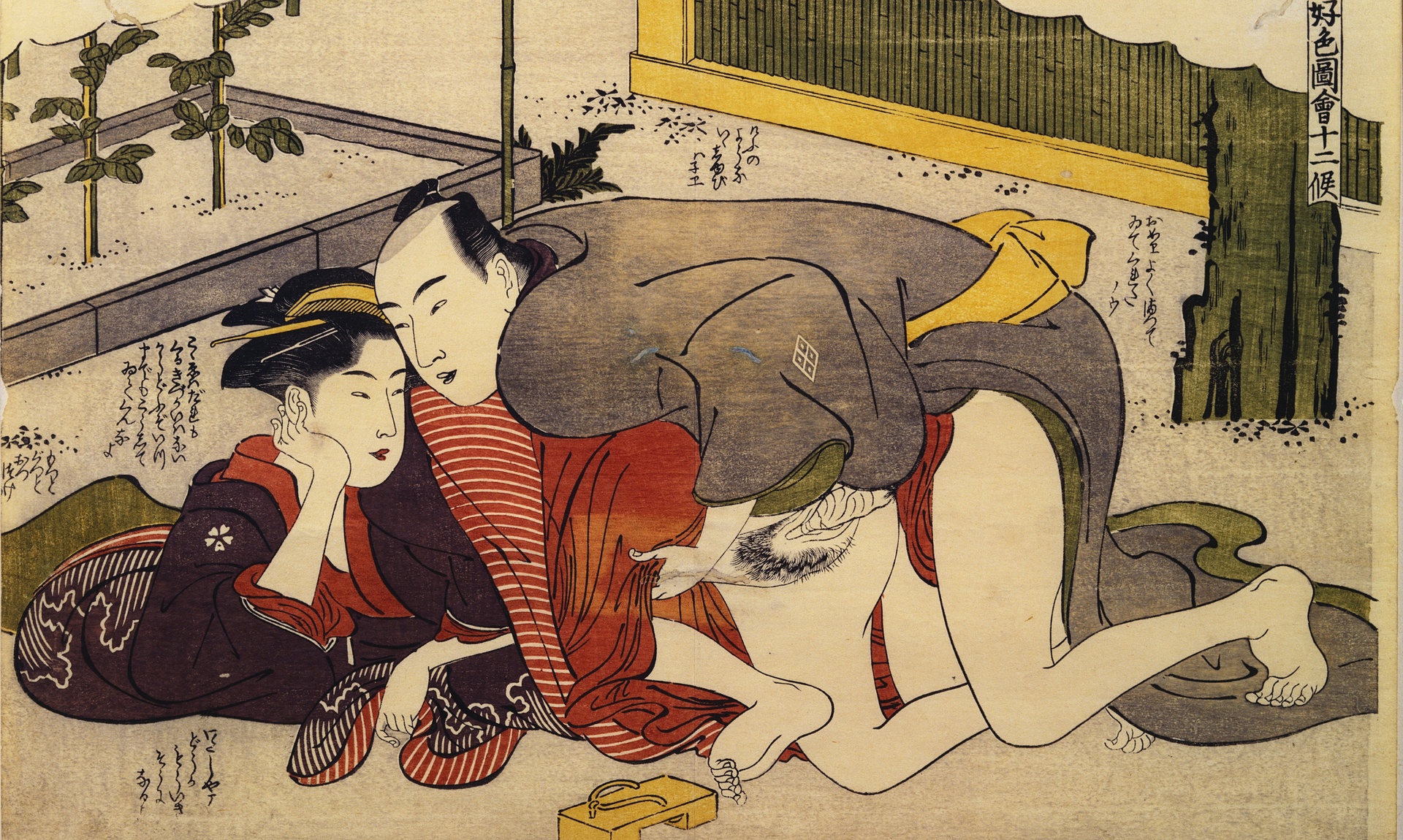 Despite Japan’s eclectic and hugely popular porn industry, many of its citizens are still prudes when it comes to the country’s rich history with erotic art, or shunga. 133 centuries-old original shunga prints, which mix graphic depictions of sex with visual humor, were rejected by 10 museums before finally finding a home at a little gallery. The woodblock prints are definitely shocking: they are of couples, and groups, in the midst of sexual ecstasy, though they’re often depicted in humorous and satirical ways. Voyeurism and orgies are recurring themes in the art, with women and men in various contorted sexual positions, their kimonos loosened or discarded.
Despite Japan’s eclectic and hugely popular porn industry, many of its citizens are still prudes when it comes to the country’s rich history with erotic art, or shunga. 133 centuries-old original shunga prints, which mix graphic depictions of sex with visual humor, were rejected by 10 museums before finally finding a home at a little gallery. The woodblock prints are definitely shocking: they are of couples, and groups, in the midst of sexual ecstasy, though they’re often depicted in humorous and satirical ways. Voyeurism and orgies are recurring themes in the art, with women and men in various contorted sexual positions, their kimonos loosened or discarded.
Created in the 17th century and eventually banned for being “obscene,” the works depict all manner of sexual escapades taking place in brothels, teahouses, inns, and even Buddhist temples. But most shocking is not the images themselves (the most famous one called “the Dream of the Fisherman’s Wife,” which depicts a woman being pleasured by two octopuses), but that so many Japanese who love porn and manga wouldn’t want to see what’s being billed as “the original shunga.” Thankfully, not everyone is so prudish: over 9,000 people have gone to see the erotic works. The museum director said, “I hope they will feel a sense of discovery and re-connection with something important that has been missing from the way the cultural history of Japan has been presented until now.”
In the mood for sexual ecstasy? We are always up for wild and shocking escapades!
Check out more about Japan’s centuries-old erotic art here.




 @NiteFlirt
@NiteFlirt